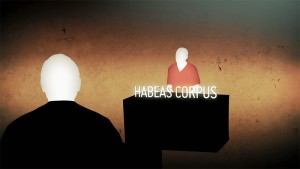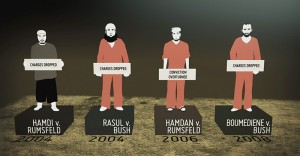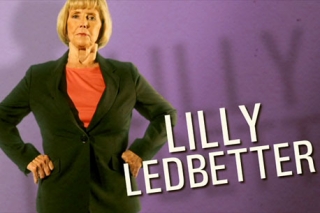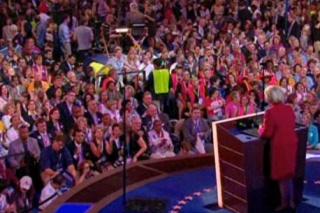About the Film
After the attacks of 9/11, as America waged two wars abroad, all three branches of the federal government – the Executive, the Legislative and the Judiciary – fought over the balance between national security and civil liberties. The fight escalated over four Supreme Court cases over four years, which became known as “The Guantanamo Cases.” The Court and the President – and even Congress – fought over the balance between national security and civil liberties during the War on Terror. The Court tried to balance the President’s duty to protect the nation with Constitutional protections of fundamental rights. And at the heart of it all, was the right of habeas corpus.
 If you’re in prison, you have the right to go to court and force the government to explain why it’s holding you. That right is called “habeas corpus,” which is Latin for “have the body.” It means that the government cannot hold you without giving you the right to appear in a court of law and challenge your detention. So, the executive can lock you up, but you have the right of habeas corpus, so you can challenge the executive in court. And Congress has the power to suspend habeas corpus in Article 1 Section 9 of the Constitution, but only in cases of “Rebellion or Invasion” – that’s called the Suspension Clause. And it’s hard to use, because habeas corpus is such an important right.
If you’re in prison, you have the right to go to court and force the government to explain why it’s holding you. That right is called “habeas corpus,” which is Latin for “have the body.” It means that the government cannot hold you without giving you the right to appear in a court of law and challenge your detention. So, the executive can lock you up, but you have the right of habeas corpus, so you can challenge the executive in court. And Congress has the power to suspend habeas corpus in Article 1 Section 9 of the Constitution, but only in cases of “Rebellion or Invasion” – that’s called the Suspension Clause. And it’s hard to use, because habeas corpus is such an important right.
Because habeas corpus can only be suspended during times of rebellion or invasion, it has been at the center of more than one wartime crisis, from the Civil War and World War II through the War on Terror. In the four Guantanamo Cases, the alleged enemy combatants challenged their detention by the government. In each case, the Court preserved the separation of powers, overturning laws passed by Congress and man dates proposed by the President aimed at denying the prisoners their right to habeas corpus. The Supreme Court explained that it is a constitutional right that extends even to enemy combatants who are not U.S. citizens and are held outside of the United States in Guantanamo Bay, Cuba. As Justice Anthony Kennedy explained in the fourth and final case, Boumediene v. Bush “[t]he laws and Constitution are designed to survive, and remain in force, in extraordinary times.” That includes the War on Terror.
dates proposed by the President aimed at denying the prisoners their right to habeas corpus. The Supreme Court explained that it is a constitutional right that extends even to enemy combatants who are not U.S. citizens and are held outside of the United States in Guantanamo Bay, Cuba. As Justice Anthony Kennedy explained in the fourth and final case, Boumediene v. Bush “[t]he laws and Constitution are designed to survive, and remain in force, in extraordinary times.” That includes the War on Terror.
Ultimately, justice came slowly for the detainees in these cases, but their cases were heard because of the right of habeas corpus.
Further Reading
Read the Supreme Court’s landmark habeas corpus decision, Boumediene v. Bush
Read President Lincoln’s controversial proclamation on the suspension of habeas corpus
Visit the 9/11 Museum website to learn more about the attacks on September 11, 2001
Learn more about the United States naval base in Guantanamo Bay, Cuba
Credits
Producers, Robe Imbriano and Maria Matasar-Padilla
Writer and Narrator, Robe Imbriano
Editor, Marc Tidalgo
Associate Producer, Amanda Scott
Field Producer, Carla Denly
Graphic Animators, Victoria Nece and Hiroaki Sasa
Photography, Edward Marritz, Sam Painter and Brett Wiley
Production Associate, Claudia Lopez
Senior Production Associate, Bonnie Birmingham
Sound, Mark Mandler, Roger Phenix, Brian Buckley and David Mitlyng
Music, Gavin Allen, Ben Decter, Audio Network
Production Accountants, Mara Connolly and Andrea Yellen
Assistant to the Executive Producer, Jessie Fairbanks and Rachael Benjamin
Senior Producer, Kayce Freed Jennings
Executive Producer, Tom Yellin



